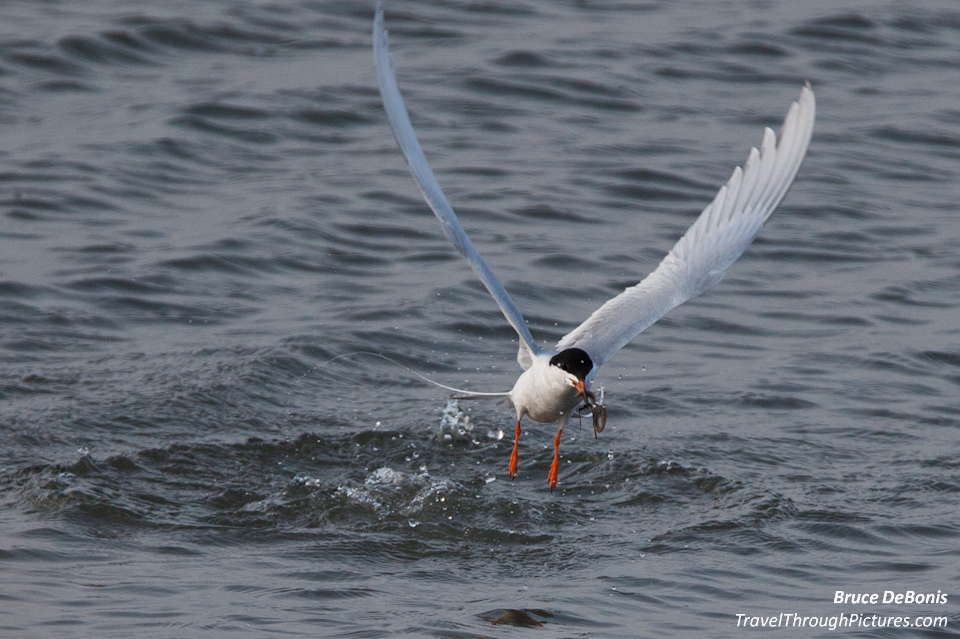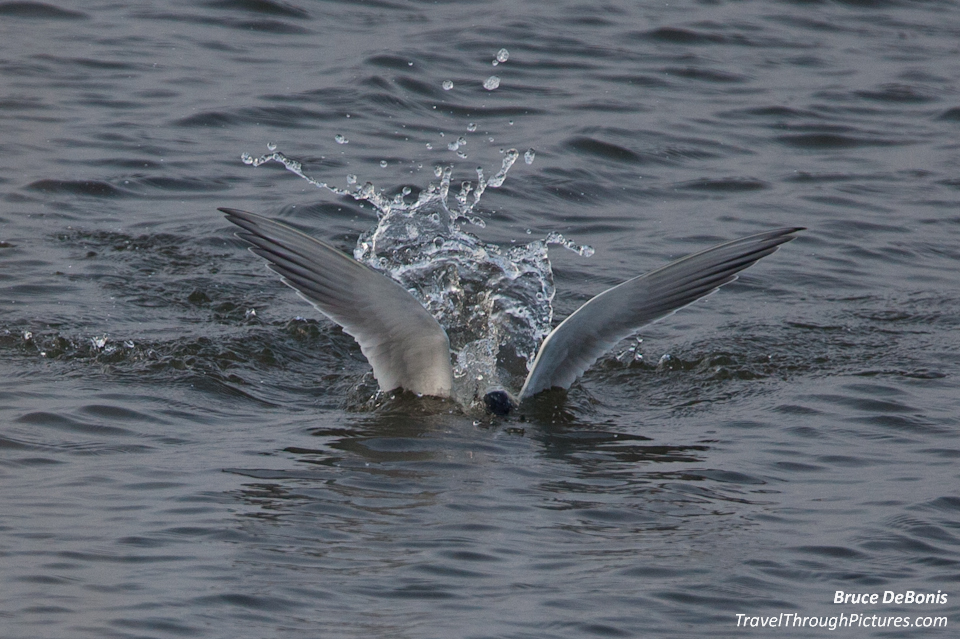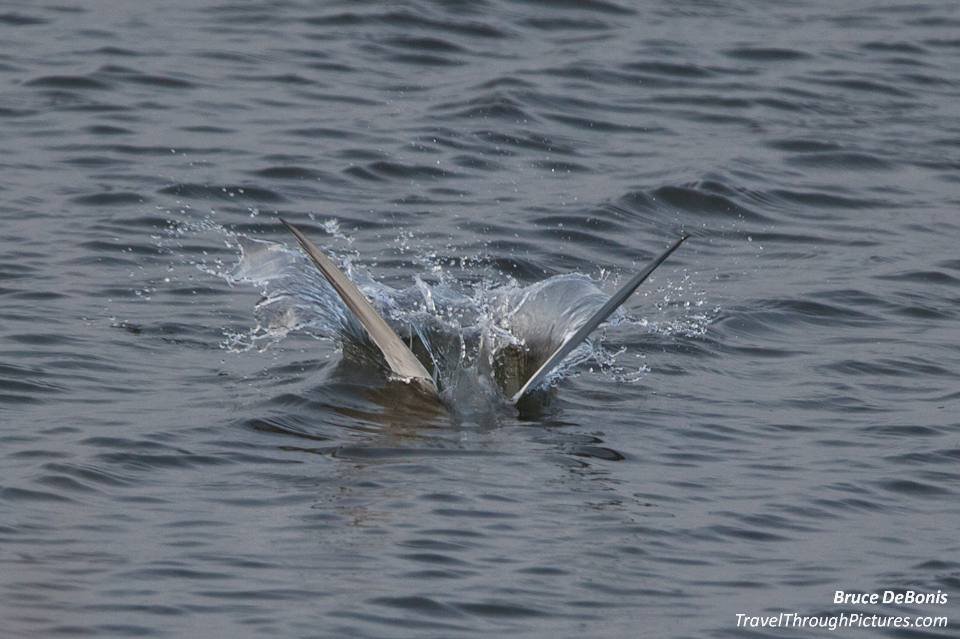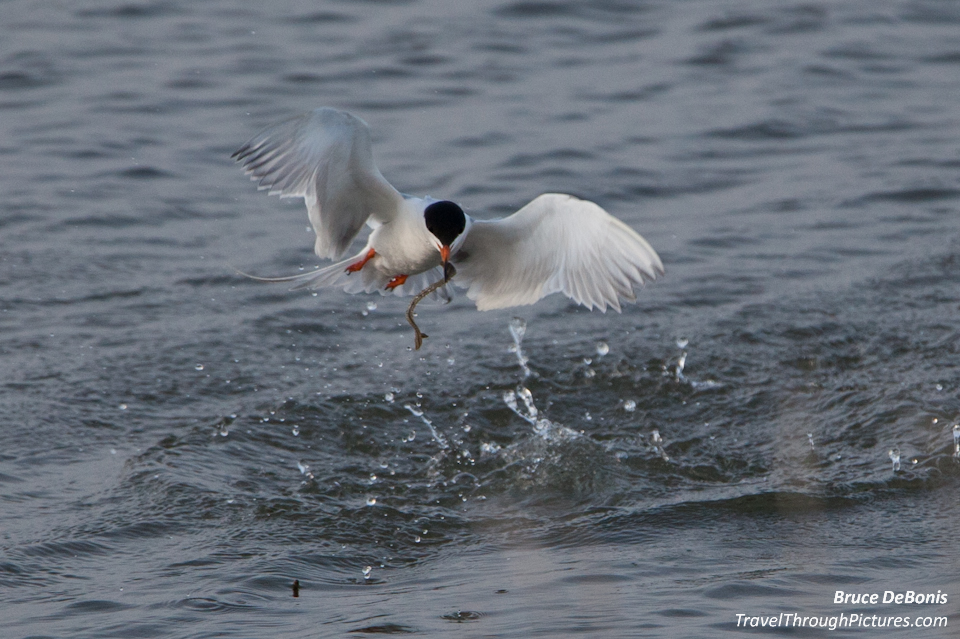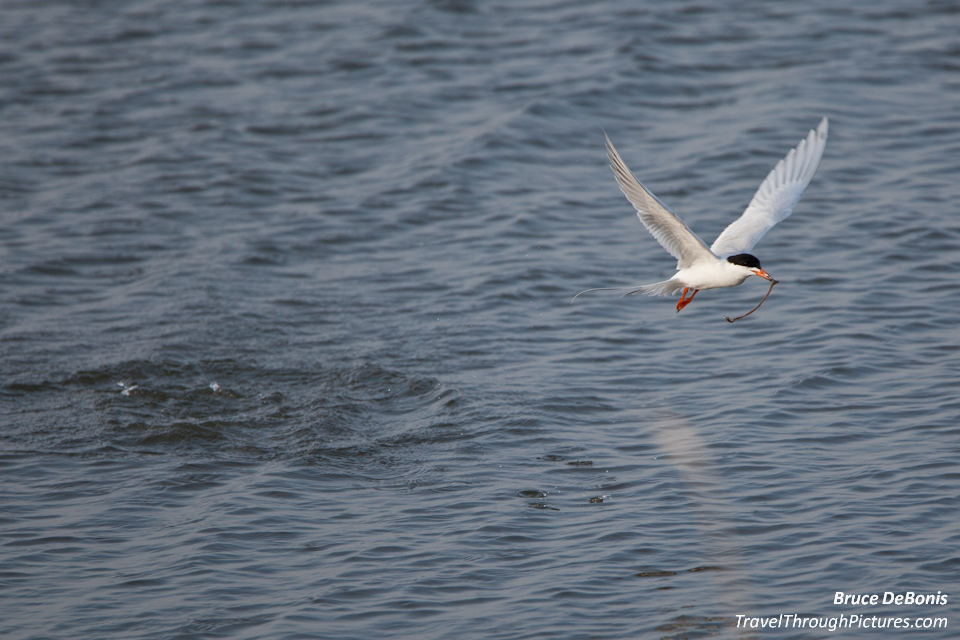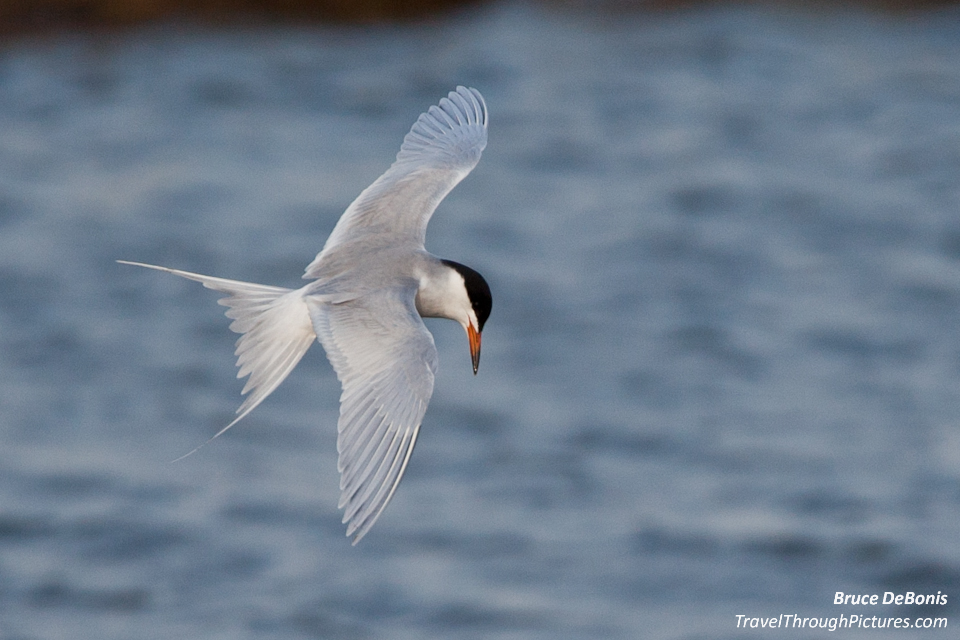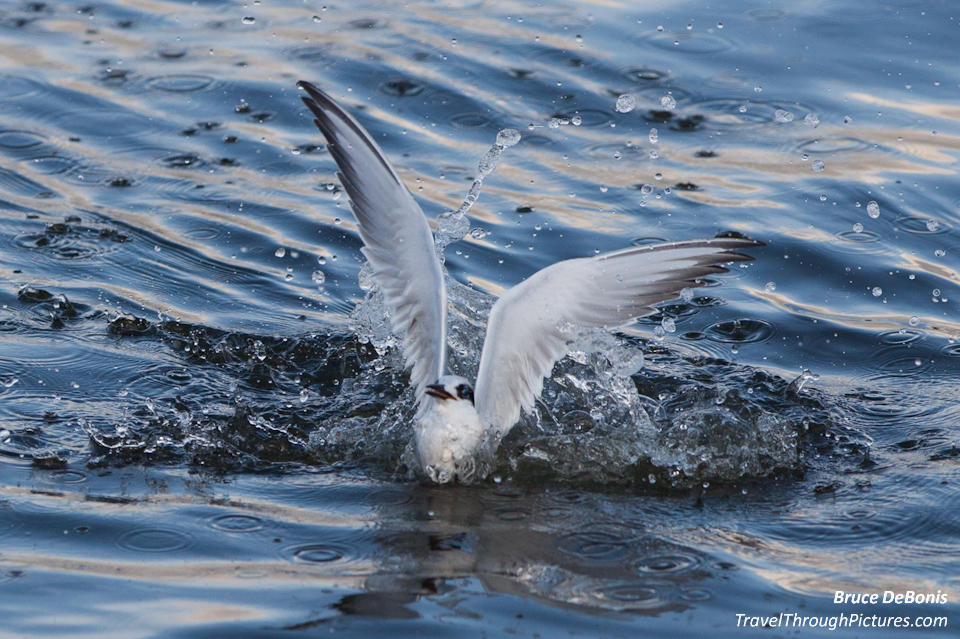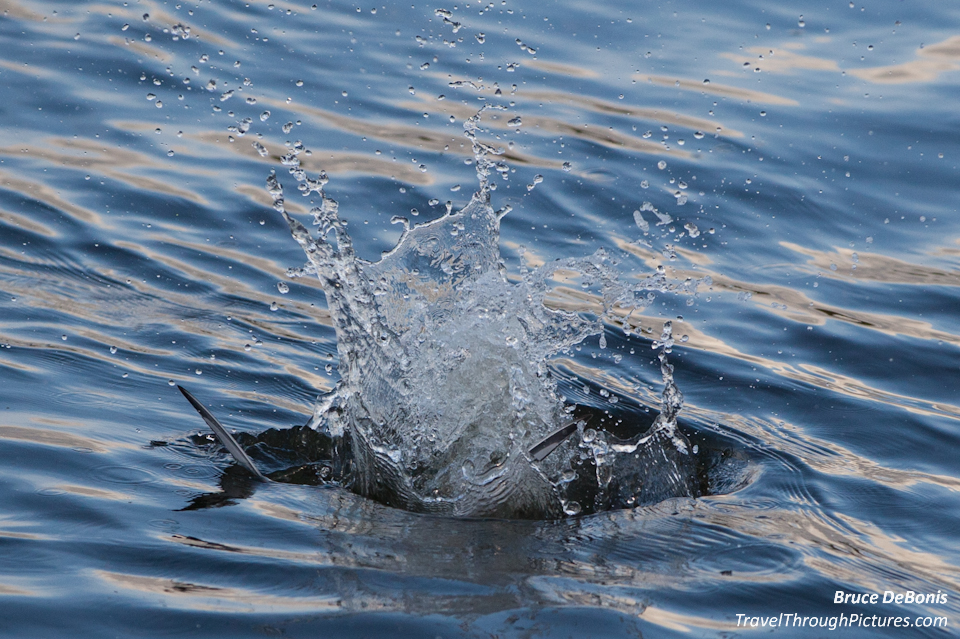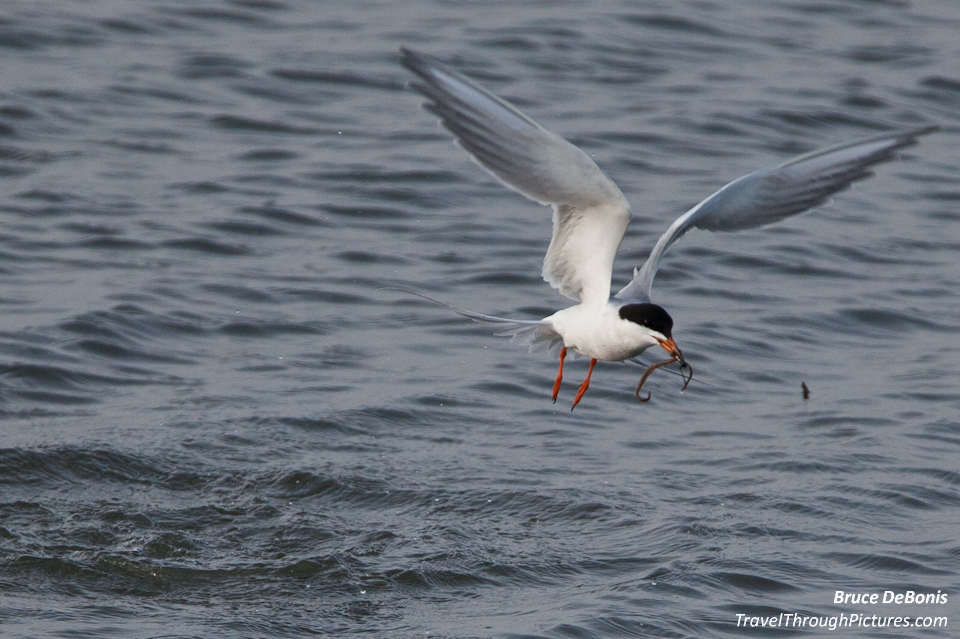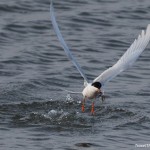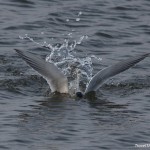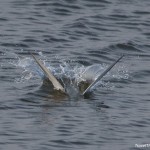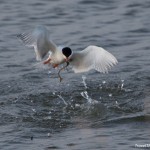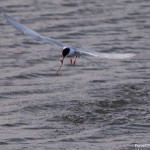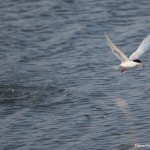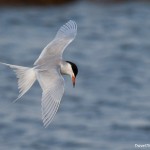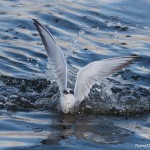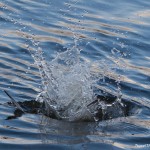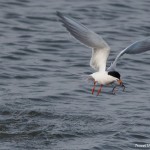The Mission: Capturing Forster’s Terns diving for dinner
Here comes one! Wooo Hooo! Dang those things are fast. They hover, float, scan, then dive like a spear. What is all the fuss? Worms. Mmmmmm…… worms….. bloodworms…sandworms… Boy, makes your mouth water.
The Problem: I have the wrong equipment
So there I am, sitting on an embankment along a New Jersey salt marsh, watching a group of Forster’s Terns diving non-stop for worms. Wow, this is cool. The sinking sun was to my left, the birds about 25 yards in front of me and I am just amazed watching these beautiful birds dive for dinner.
Unfortunately, the birds weren’t the only creature out there diving for dinner as I’m getting bit by every kind of flying and stinging bug known east of Philadelphia. I didn’t realize that I was sitting under some sort of bug-sign that said “Italian for Dinner!” so I slathered on some more sauce labeled “30% deet” that I purchased at my local REI and focused back on taking pictures. You know you love photography when you are sitting there puckering up like a punctured strawberry and the only thing you are thinking about is snapping the next pic.
But things just aren’t working out for me. As I review a few shots, I see that they are all massively out of focus. Why? I have the wrong equipment:
- Canon 5D MkII
- Canon 70-200 IS f/2.8 II lens set at full 200mm zoom
- Canon 1.4X teleconverter II resulting in 280mm
- Manfrotto 190CXPRO4 tripod with a 222 pistol ball head
How do I know it is my equipment that is wrecking this rare photo opportunity? Birder Brains told me so. I like picking the brains of birders I meet out during my excursions asking them questions about the birds, migratory timings, their goofy khaki vests, and of course, about their photography equipment. Now your typical Birder Brain isn’t out there snapping pics with your basic, fit-in-your-shirt-pocket point ‘n shoot. No…… They carry er… lug around some massive high-dollar equipment. One kind Birder Brain gentleman I met opened the trunk of his car to display around 45 thousand dollars worth of glass, magnesium, and electronics! Sheeeshooozzzamm! The only thing I could think of was how one clunk on his head could get me started as a fully paid staff photographer for National Geographic. But no, I know it takes more than great equipment to land those cherry jobs; it takes connections like having an uncle on their Board of Directors. Darn… dash the clunk on the head idea as I don’t have such an uncle.
So what’s wrong with my equipment? Birder Brains all said the stuff I have just wasn’t fast enough. Not f/2.8 fast enough, but focus and shutter fast enough. In many ways they are right…. but I didn’t let this stop me.
Technology: Sometimes you gotta improvise.
The Birder Brains are correct in that my setup is slow. But it gets a bit more complicated that just this. First, let’s examine the shutter speed. My 5D Mk II is spec’ed at 3.9 frames per second and I seem to get that no problem with shooting RAW only and using a SanDisk 60MB/s UDMA memory card. Now when I stand there with my puny equipment dangling there in front me clicking away at 3.9 and I see these Birder Brain’s massive photo tools firing away with Gatling-gun-like shutter blasts, I know I just can’t be getting any good shots. Well the truth be told, speed does help. But I don’t have it so you have to improvise. You have to plan. You have to learn good technique. How do you get just that perfect shot? Well I wish I can tell you some secret recipe, but it is really is as simple and basic as practice. I don’t rely on the speed of my camera to get me the shot, I try and just get it with the first click. Having said that, I then let it fly at full 3.9 ‘cause it sure feels good to do it that way. I have my camera set in multi-shot mode 100% of the time as to not miss that big Boeing dropping out of the sky and my 15 minutes of fame on CNN.
Having a fast shutter is better, but is not necessarily bad if you don’t have it. Focus speed, however, is another issue all together and there is no doubt that my setup just does not focus fast enough. Some have said it is the 5D MkII. Others point to the teleconverter. How about the combination? No one seems to point the 70-200 2.8 IS II as the problem and I have to agree with this one. I ran some tests and found this camera and lens setup focuses plenty fast without the teleconverter. Add the teleconverter and it slows down especially in lower light like this later afternoon light. I really don’t like this teleconverter primarily for this reason. (Note: I learned after I took these pics and wrote this up, that turning off the image stabilization on a different Canon lens I own, actually did speed up autofocus… so give this a try also as you are moving the lens pretty fast and erratically beyond IS capabilities.)
Now Birder Brains tell me the best way to get these terns into focus is to use Canon’s AI Servo Mode. AI stands for artificial intelligence and in this mode, the camera tracks the moving subject and constantly changes focus. Birder Brains tell me how wonderful this Canon technology is and in my setup with the teleconverter installed, it just does not work. I tried and tried using AI Servo Mode and it just does not work for me. I do get tracking, but the focus is just not sharp. I tried deactivating the auto-assist focus points and tried turning them back on and I still get poor performance. I did get better results by turning the IS Stabilization Mode on the lens to 2 for panning, but tracking performance still sucks.
So how did I get these guys into good focus? Honestly it was quite a bit of luck and some technique. You can make your own luck by shooting a ton of pictures and tossing out the bad ones. This day, I was fortunate that the terns were hungry so I had plenty of shooting opportunity. So here is my list of tips:
- ISO 400 – I think picture quality on my 5D Mk II suffers over 400
- Aperture wide open at f/4
- Center focus point only (I honestly don’t get these camera reviews that claim more is better)
- IS Stabilization Mode set to 2 for panning (try OFF, your focusing speed may be better)
- Try underexposing a bit to get more speed that works well when the birds are white
- I set my metering on expanded spot as the targets are small (expanded spot is just larger than spot metering)
- Take lotsa shots, experiment, and pray
A Tripod? Really?
I use one almost all of the time as I have extremely shaky hands. I blame the shake on youthful indiscretion in my college years. Birder Brains are macho types who like swinging their lumber around kinda free and easy like but that is not me. I use a Manfrotto tripod and pistol ball head that really helps me stabilize the system and still be quick although I am at its weight limits with this rig. But is does work for me.

